9 materials for decorating the walls of the kitchen
The kitchen is the place where we spend a considerable part of time cooking and eating, and that is why decorating this room special attention needs to be paid. Moreover, the kitchen is also characterized by rather specific conditions, because there are always odors, steam, humidity, and the surface of the walls can be directly affected fat splash and products. Based on all this, it becomes clear how important choose the right decoration material for the walls in the kitchenthat would meet all aesthetic and operational requirements. Today there is plenty to choose from, and we offer you the most popular options.
No. 1. Ceramic tile
Just a couple of decades ago, most kitchens were completely finished ceramic tiles, and there are a lot of reasons. Today, interior fashion has changed a bit, and ceramic tiles are increasingly only finishing the work area. This material is most suitable for the kitchen, especially for the part where all cooking processes take place. The main advantages of ceramic tiles include:
- huge assortment, because the tile may vary in size, shape and type of surface. It can be glossy or embossed, matte or glossy, have any shade, pattern, ornament, imitate any material. In general, this is a real scope for imagination;
- moisture resistance. The material is not susceptible to moisture, does not absorb it, so it is ideal for the kitchen, and especially for the working area;
- low flammability;
- easy care, because all dirt and grease particles can be easily erased with a damp cloth, and if necessary, detergents can also be used. For the kitchen, it makes sense to choose a tile with the designation AA - a symbol that the material is resistant to the effects of aggressive substances;
- wear resistance and durability.
Some types of tiles are very decent, but when combining two finishing materials, when the tile is used only in the apron area, you can afford to purchase ceramic tiles from a well-known manufacturer with a guarantee of quality and reliability. It is also worth noting that lay the tile yourself on the wall not so easy therefore you may need the help of specialists. Some also opt for mosaic, which is similar to a tile in properties, but allows you to create slightly different decorative effects.
No. 2. Painting
Paint the walls on the kitchen - one of the budget optionsbut far from the worst. Since the paint can be completely different, even any shades, in the kitchen you can create exactly the interior that is needed. You can mix different shades, create patterns and patterns, but with all this it is important that the paint meets the minimum requirements of the features of the kitchen. So, the surface should be easy to wash, which means it should be moisture resistant. Among other advantages of paint is worth noting ease of application - anyone can cope, as well as excellent maintainability, since easy to renew coating with a new coat of paint.
To use this finish option, it is important to properly prepare the wall surface: they should be smooth and free from defects, because cracks and depressions will be very noticeable under a layer of paint. By the way, the glossy coating often looks better, it is easier to wash, but it will emphasize all the bumps, so often the choice falls on matte paint.
What paints will pass for the walls in the kitchen?
- acrylic and latex. They are easy to apply, dry quickly, adhere well to the base, any color can be achieved with a tint, but before painting it is necessary to dry the walls well: after they plastering it should take several weeks. Acrylic paint is even more durable and moisture resistant than latex. The surface painted with such a paint is easy to wash, it does not lose vapor permeability. Latex paints are often used for coloring wallpaper for painting, they demonstrate excellent durability and strength;
- alkyd paints today are used infrequently, because when applied and dried, an unpleasant pungent odor is formed. Otherwise, they are great for kitchens: wear-resistant, moisture-resistant, tolerate temperature extremes, the effect of direct sunlight, easy to apply, economical;
- silicone paints combine the advantages of previous types of paint. They are distinguished by their amazing performance properties, they dry quickly and can be applied to newly plastered walls. Their only minus is the high price.
Even moisture-resistant paints are best used away from the work area to reduce the risk of grease and particles of different products getting onto the surface. The combination of various finishing materials in the kitchen, in addition, is a great way to highlight the cooking and eating areas.
No. 3. Wallpaper
Wallpaper in the minds of many are associated with coziness, so why not transfer this coziness beyond dinner table? Yes, no doubt in the kitchen no place for paper wallpaper and many other natural ones, but there are such wallpapers, which quite normally withstand the conditions of this room. To the advantages of wallpaper worth attributing profitability, relative ease of installation, as well as those effects that can be achieved with their help, because range Wallpaper today is simply amazing.
Ideal for the kitchen vinyl wallpapers. They are not afraid of moisture, they can be washed, and in some cases even rubbed with a brush, they do not fade, do not absorb odors, are not afraid of grease and dirt, are durable and attractive in appearance. Their only minus is the inability to breathe, which can adversely affect the microclimate. But there is a way out: it is better to ventilate or use the most modern type of finish - solid vinyl wallpaper.
Non-woven wallpaper devoid of the main drawback of vinyl wallpaper - they pass air well. In terms of other properties, they are almost not inferior, being also moisture resistant and durable. Some types of such wallpaper can be painted several times.
For the kitchen you can also use culletwhich demonstrate excellent indicators of reliability, durability, moisture resistance and fire resistance. They can be painted in any color, they reinforce the walls, hide flaws. Cullets are not afraid to even use in the working area of the kitchen. Show themselves well and liquid wallpaperwhich differ in simplicity of drawing and lack of seams. In the area of the dining table you can use moisture resistant photo wallpaper and even water repellent paper wallpapersbut the second option is not very durable.
Number 4. Decorative plaster
An equally popular type of finish is decorative plaster. Today, the construction market offers a lot of different options with which you can create a unique and original coating. The advantage of decorative plaster is that it always turns out from the same composition unique patternwhich can be formed independently. Most species plaster compositions easy to apply, but some will require the help of professionals, for example, when it comes to Venetian plaster.
The advantages of decorative plaster should also include possibility of drawing on any type of material and seamless final surface. With this trim you can mask some surface flawswhile the walls themselves do not lose their ability to “breathe”. Many formulations include fungicides and antiseptics to prevent the appearance and development of mold, which often affects wet rooms, including and the kitchen. Stucco is different wear resistance, it is not so easy to damage, it is durable, does not attract dust, which means it is easy to care for. The plastered surface can be washed, in which case it is easy to repair, it is not afraid of temperature changes, fireproof.
Plaster as well as wallpaper should not be used in the area of direct contact with water and dirt. If your plans to carry out some unique design finish using stucco, then it will be difficult to cope on your own, and almost anyone can cope with the most usual process of applying stucco. It is also worthwhile to be prepared that cracks may appear on the plastered surface.
No. 5. Natural and decorative stone
Using stone the interior of the kitchen can be transformed beyond recognition. Natural stone has a lot of advantages: it is not afraid of water, does not burn, is hygienic and is almost always easy to care for. You can use marble, granite, slate, sandstone or any other breed of stone that best meets a specific design idea. But natural stone is an expensive pleasure: the material itself and installation work are quite expensive, and the material weighs decently.
A great alternative to natural stone - artificial counterpart. In appearance, it is very similar to natural, it is made of cement, sand, plasticizers and dyes, and you can give it any appearance, so it can imitate any breed of natural stone. Such material lightweight, easy to install and maintain, much cheaper than natural stone, perfectly tolerates moisture, does not burn, durable and durable, it can be washed and even rubbed. True, in terms of service life, it loses to natural stone, but this disadvantage is completely compensated by its price, ease and other useful operational properties.
The stone so well tolerates all the effects that are possible in the kitchen that it can be used to decorate the walls in the apron area, not to mention the decoration of the dining area. But you need to be careful with the stone: when it is an adornment of a part of the room, the room looks stylish and unusual, but if all the walls are finished with stone, then there will be no trace of comfort and warmth. This is an option for those who want to style their kitchen as a castle.
No. 6. Wooden lining
What could be better than natural wood in the decoration of the room, because it brings special comfort and gives a unique aroma. Great option - use wooden lining, which, while maintaining all the positive qualities of wood, in the process of processing receives a number of other qualities that are useful in operation. As a result, this finishing material boasts chic appearancenaturalness ability to withstand moisture, temperature changes, sunlight. The material is easy to wash, and many even risk using it to design the working area of the kitchen. But with all this, it should be borne in mind that a wooden lining “steals” the useful area of the kitchen, and each wall will become 4-5 cm closer to the center.
Pine, linden, alder, oak and teak lining are perfect for kitchen conditions. Naturally, this pleasure is not cheap, but a plastic lining can be called a more affordable analogue.
Number 7. Plastic panels
Plastic panels are an excellent material for decorating kitchen walls.Under this collective name, they usually mean a PVC lining with a width of up to 12.5 cm and a length of up to 3 m, wall panels with a width of up to 50 cm and PVC sheets with a width of 80 cm to 2 m and a length of 4 m. Each of these types of materials its advantages in terms of ease of installation and the appearance of the finished finish. In terms of performance, they all boast the same advantages:
- ease of installation and ease of construction;
- easy care, because plastic can be washed using even detergents, except for abrasive ones;
- moisture resistance, therefore, panels should not be afraid of contact with water, and fungus or mold will never start on them;
- panels tolerate temperature extremescan withstand temperatures up to 1200C, but still right next to an open fire it is better not to use them;
- profitability;
- huge range of possible colors, so you can create almost any kitchen interior.
However, plastic panels also have some disadvantages, among which low strength, not very good durability. In addition, with prolonged contact with direct sunlight, the previous color of the finish may be damaged. When buying such material, it is important to make sure that there are certificates confirming the safety of products.
Number 8. Glass panels
A rather unusual and rather rare way of decorating the walls in the kitchen. Glass panels can be used. both in the working area and in the dining room, they have excellent operational and decorative qualities. So, on glass you can apply any picture, even a photo, which means that the kitchen will receive an exclusive design. For the manufacture of panels, durable armored glass is used, which is difficult to break, but even if damaged, it can not harm others. Similar finishing material is enough easy to install and maintain, not afraid of water, high temperatures, will not become a place of mold development. Glass panels are durable, and the pattern on them will remain in their original form for a very long time. They are not afraid of strong heating, temperature differences, and all splashes and dirt from them is very easy to wipe. All this, together with a chic appearance, makes glass panels ideal for arranging a kitchen.
No. 9. Metal
At first glance, the metal walls seem somewhat unacceptable, but they are quite suitable for the design of a kitchen apron. This option is great for high-tech kitchens and minimalism. it very practical and durable finish material, which perfectly tolerates the effects of moisture, spray, high temperatures. It is better to opt for stainless steel.
You can create metal walls in the kitchen by using various materials: this overlay of metal on plywood or chipboard a certain size metal mosaic or tile with metal surface.
In conclusion
As you can see, for the arrangement of the kitchen there are many different decoration materials. Some of them can be called universal, others are suitable for a certain part of this room. By combining different materials, you can create a unique interior in the kitchen that will meet all aesthetic and operational requirements.



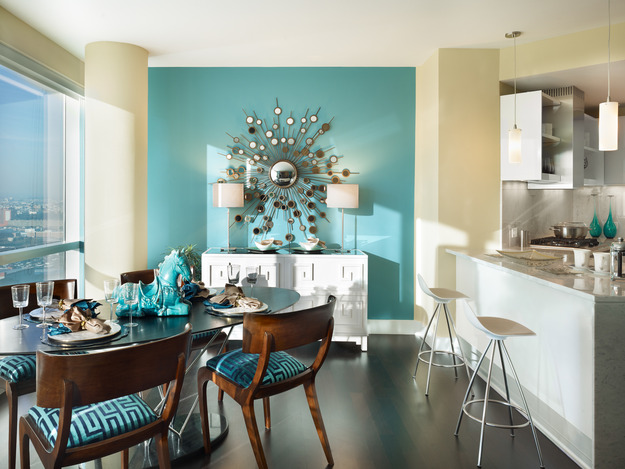

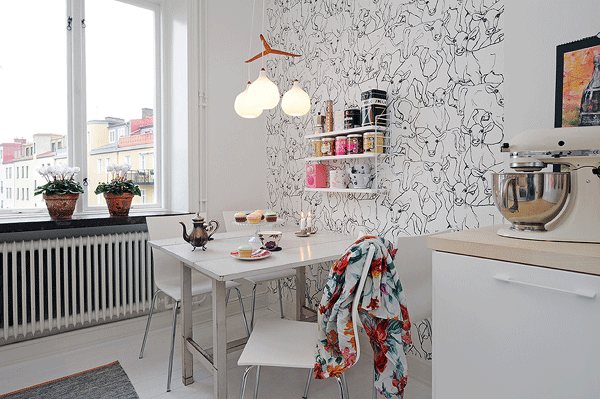


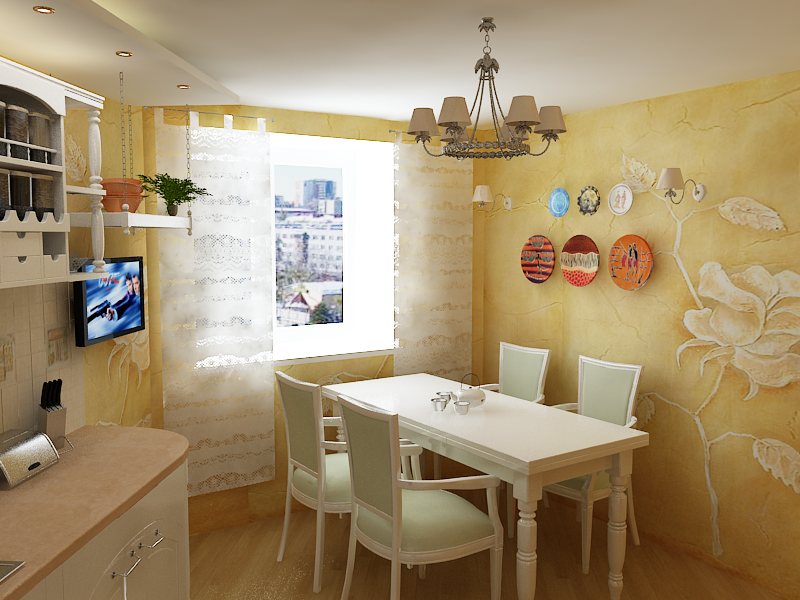
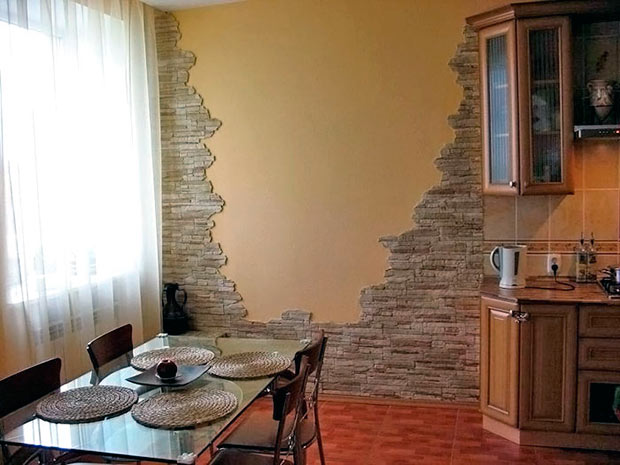
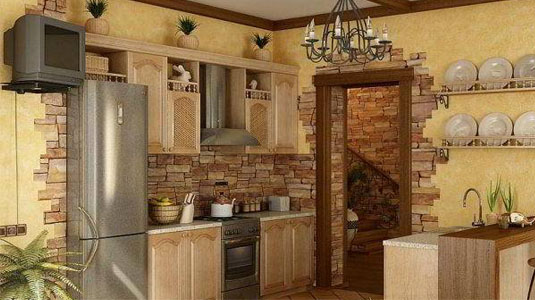


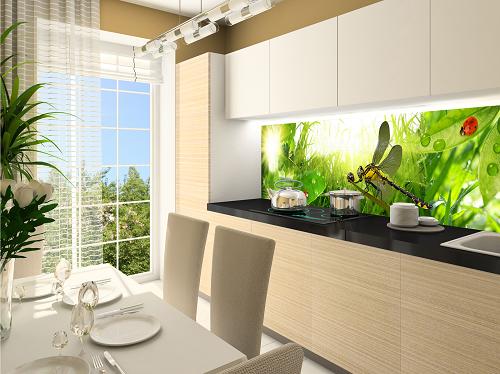
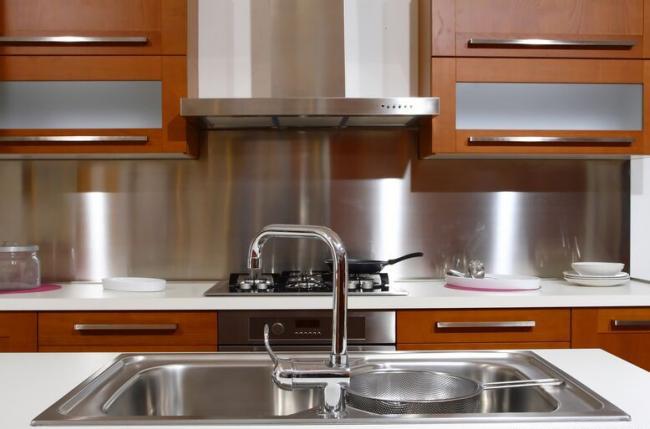
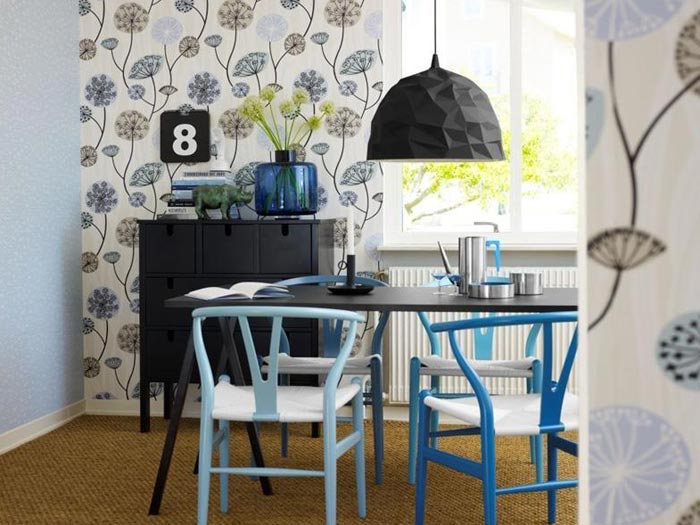
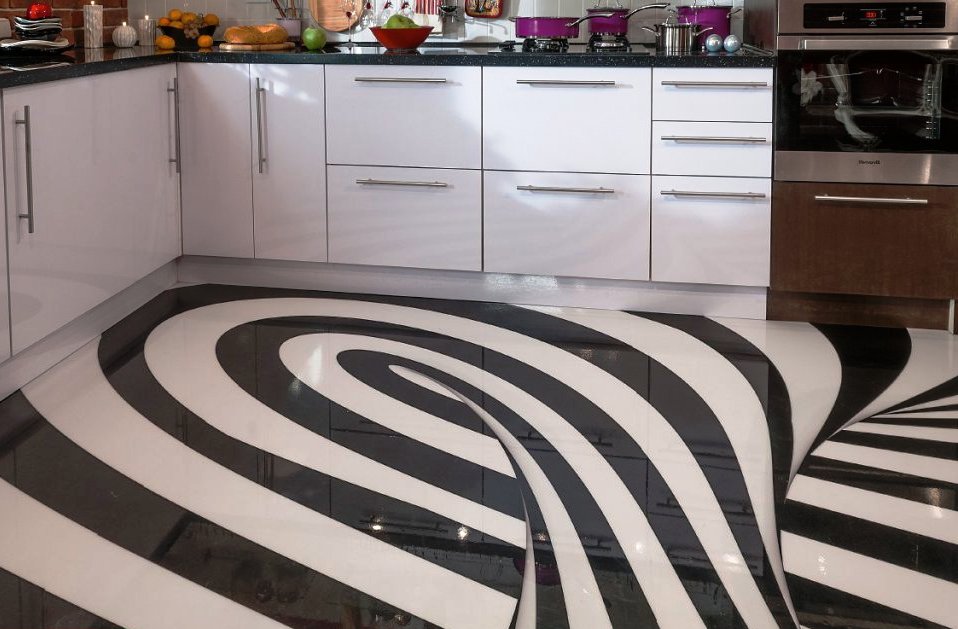
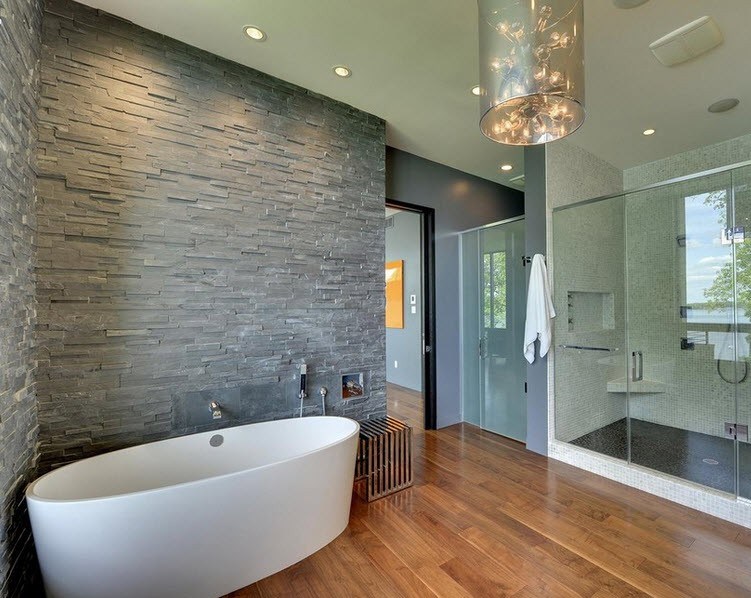
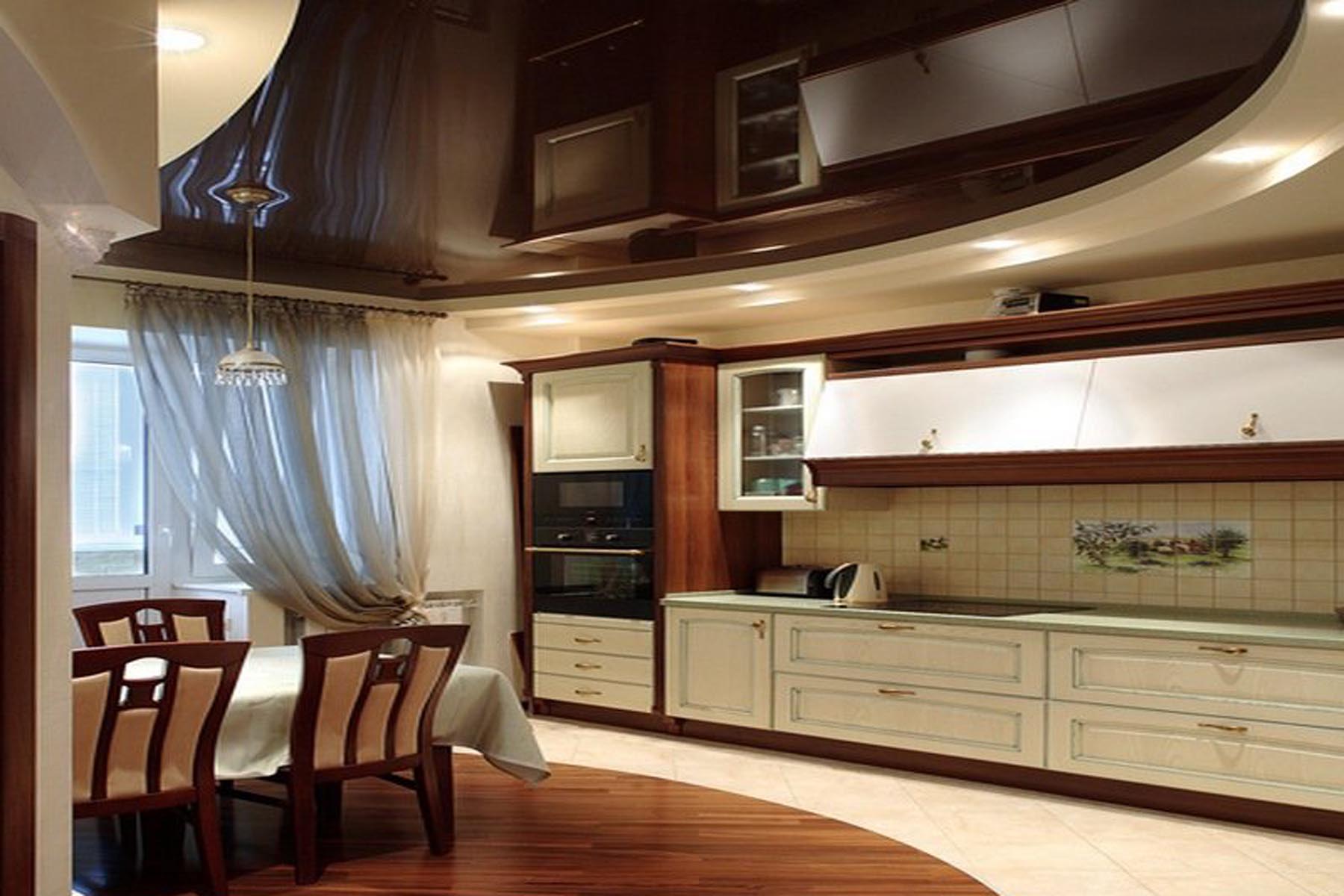
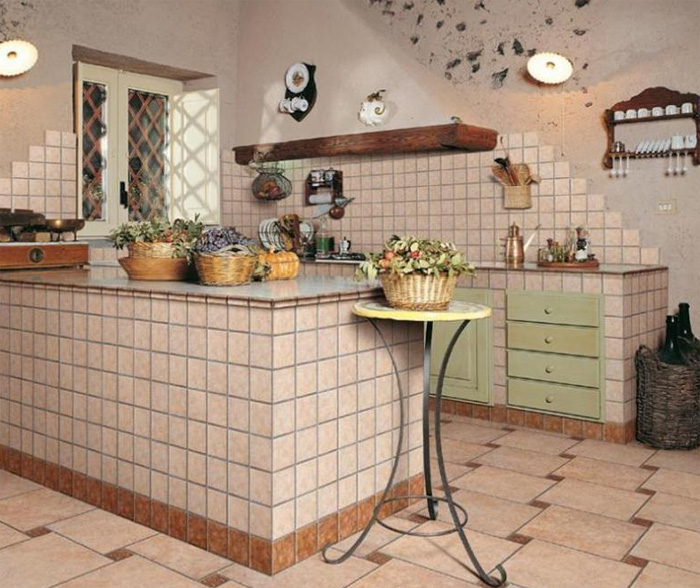
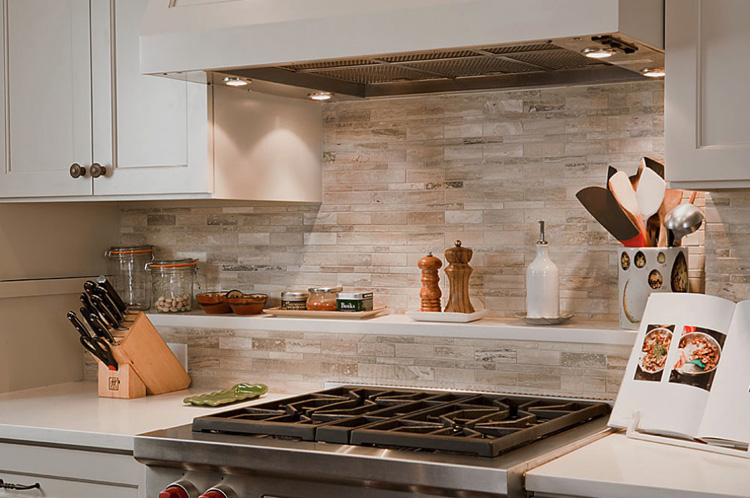
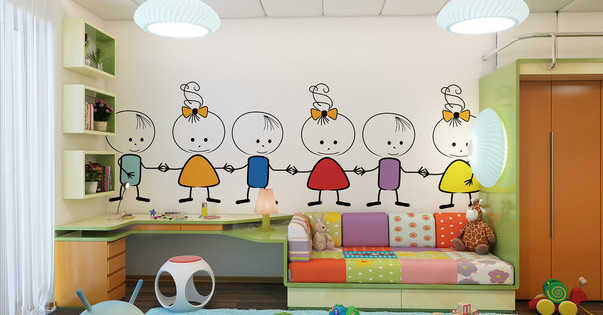

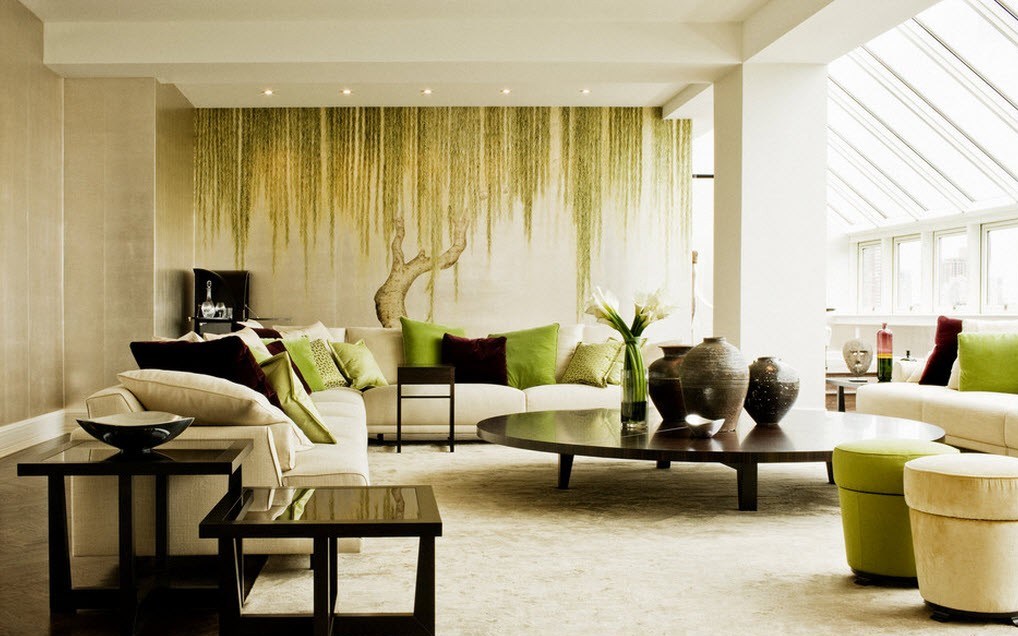
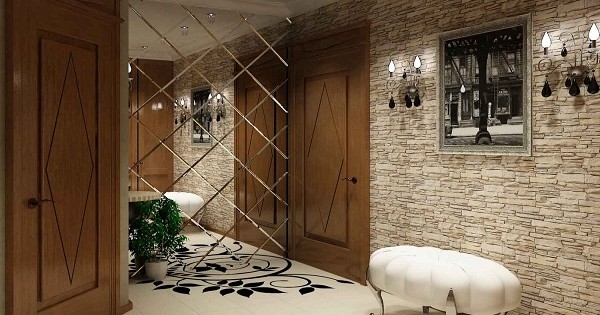
And we used Izotex decortion panels for the walls. It is perfectly mounted, and most importantly environmentally friendly.